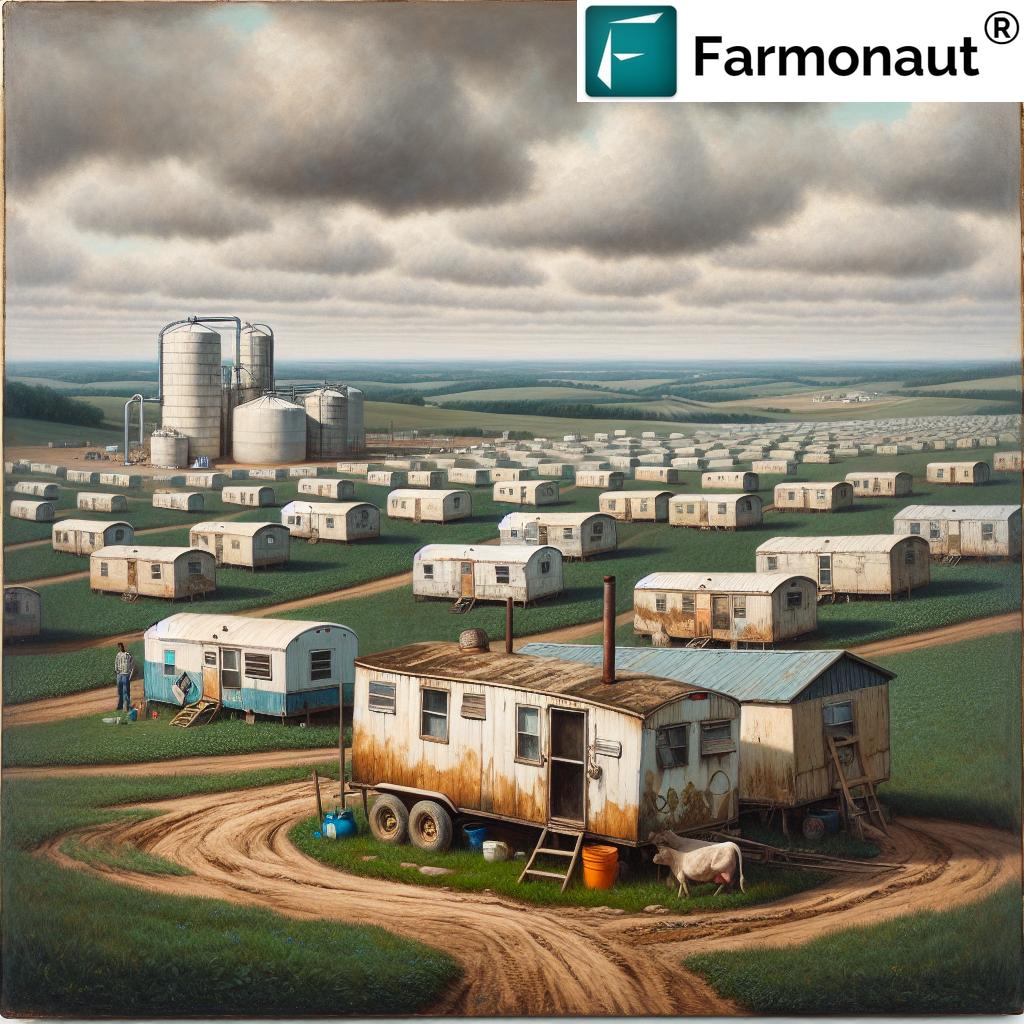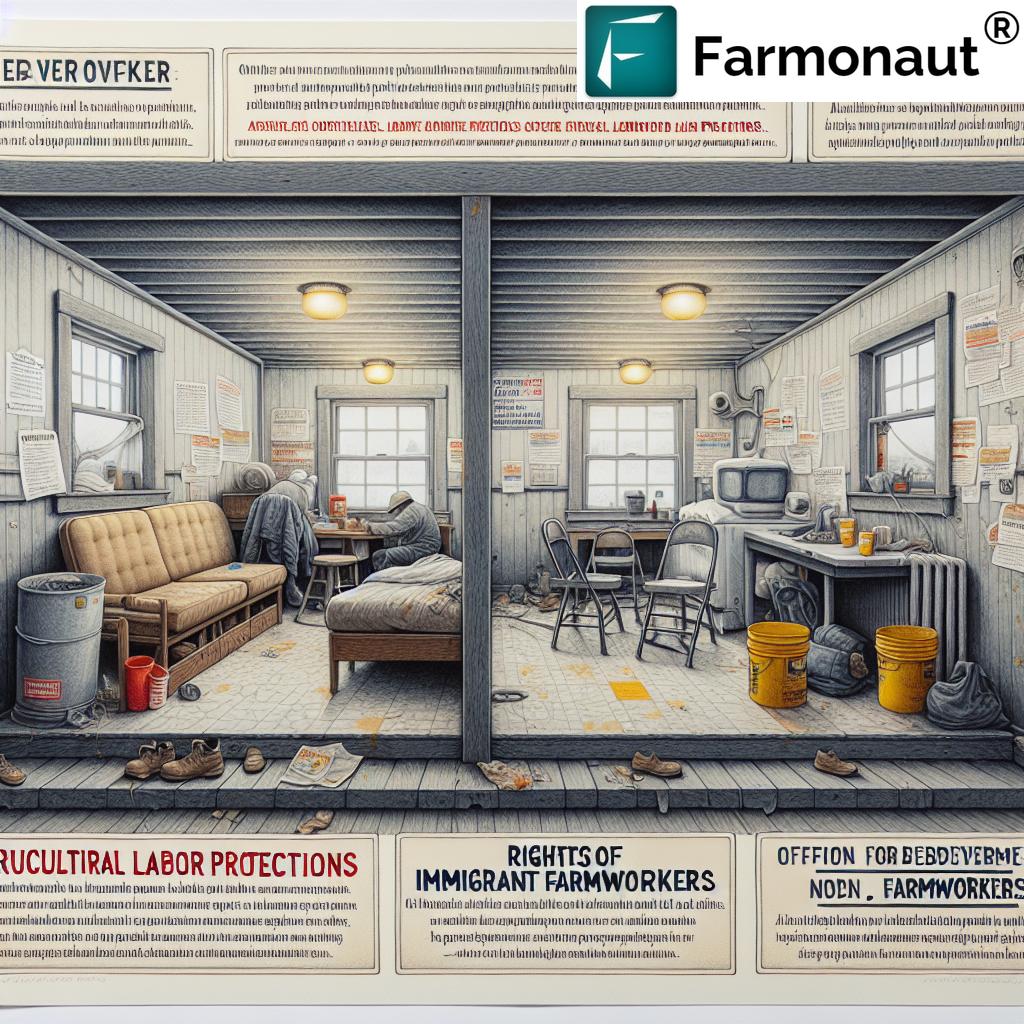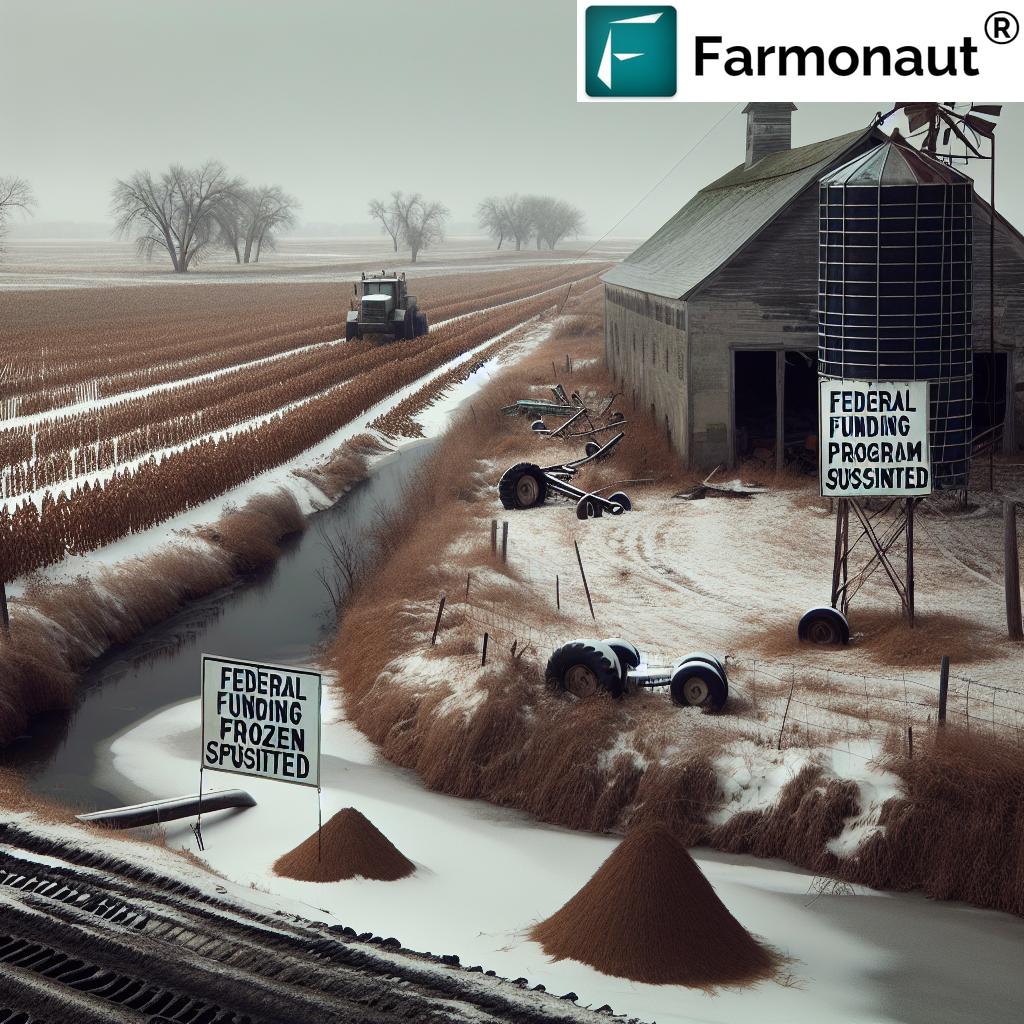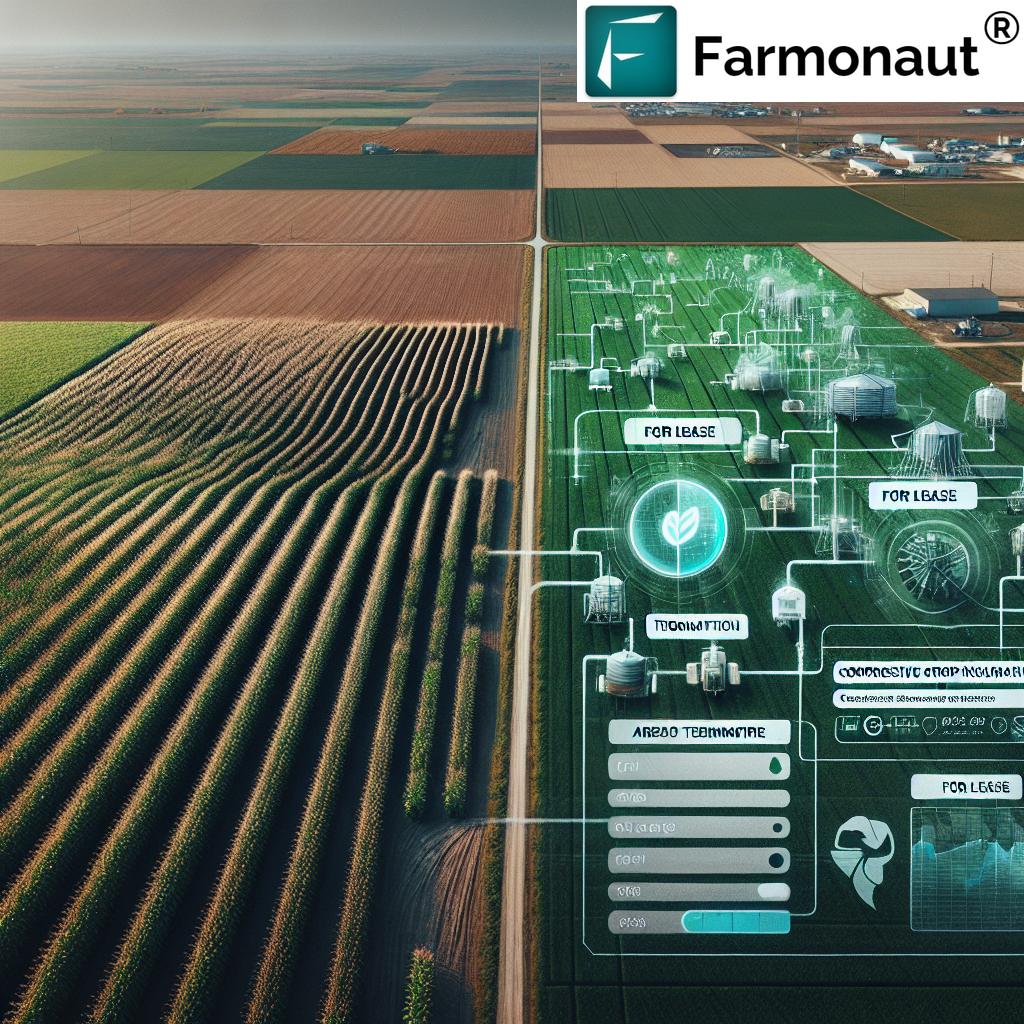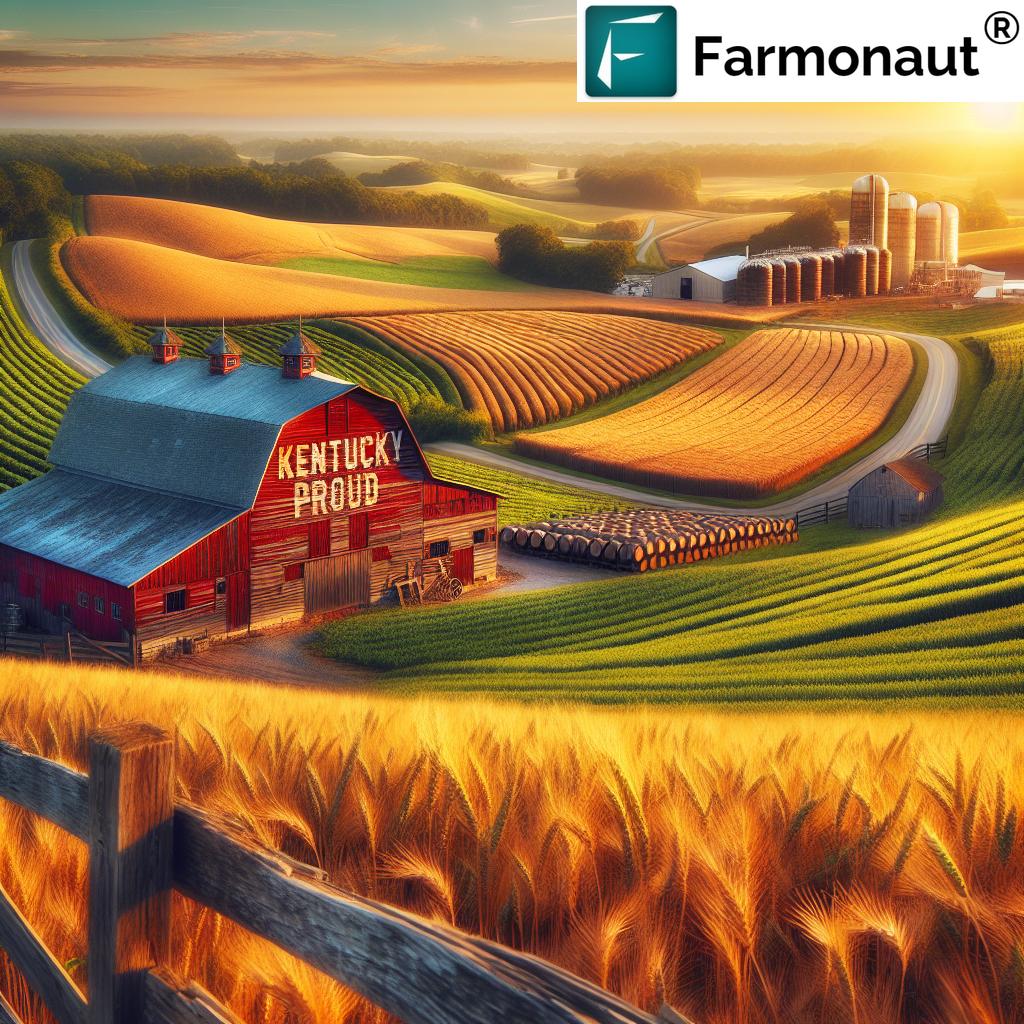Table of Contents
- Introduction: Farmworker Housing New York – Urgent Concerns
- Farmworker Housing Trivia
- New York’s Dairy Agriculture: Essential Workers at Risk
- Farmworker Housing New York: 7 Urgent Issues Impacting Immigrants
- Comparison Table: Urgent Housing Issues
- Regulatory Gaps in Farmworker Housing and Labor Protections
- The Human Impact: Health, Safety, and Rights of Undocumented Farmworkers
- Advocacy, Policy & Legislative Solutions
- How Farmonaut Supports Safe, Sustainable Agriculture
- Frequently Asked Questions (FAQ)
- Conclusion: Addressing Urgent Issues for a Sustainable Future
Farmworker Housing New York: 7 Urgent Issues Impacting Immigrants
“Over 50% of New York’s dairy farmworkers are undocumented immigrants facing severe housing shortages and limited legal protections.”
Farmworker housing New York is at a tipping point. As local, state, and federal immigration policies become more stringent, the individuals who make New York’s billion-dollar dairy agriculture industry possible—over half of whom are undocumented farmworkers—face not only risks of detention and deportation, but also substandard living and working environments. Our dairy farms rely profoundly on immigrant labor, yet the rights and protections for these workers lag far behind their essential contributions to the state’s economy and food security.
The farmworker crisis is not confined to the fields. It stretches into the very homes—often employer-provided—where workers and their families sleep, eat, and attempt to build a life amidst persistent fear of retaliation, unhealthy environments, and gaps in the regulatory system. As we explore the intersection of farmworker housing New York, dairy industry labor shortages, immigrant farmworker rights, and the realities facing undocumented workers, we must be vigilant about the urgent issues that shape not only individual lives, but the future sustainability of New York’s agricultural sector.
In this comprehensive blog, we’ll shine a light on the seven most urgent issues in farmworker housing New York, provide policy insights, and share how technology-led solutions like those from Farmonaut are shaping more equitable, resilient agriculture for all.
New York’s Dairy Agriculture: Essential Workers at Risk
New York ranks among the top states in dairy production, standing as a cornerstone of both our local economy and wider agricultural output. The industry generates billions in revenue and supports local communities from upstate to the southern counties. Yet beneath this prosperity lies chronic labor shortages—a reality only deepening as federal immigration enforcement intensifies.
According to a Cornell University State Policy Advocacy Clinic report, more than 50% of all agricultural workers in New York, and nearly 100% in the dairy sector, are undocumented immigrants. These workers are not seasonal temps; they labor year-round, often in grueling dairy farm working conditions, exposed to hazards, long hours, and continuous uncertainty about their future.
As detailed in news reports from Ithaca and upstate new york, the Trump administration’s invocation of the Alien Enemies Act and heightened ICE raids have amplified the pressure, causing many farmworker families to live in constant fear of detention, deportation, and family separation. If mass deportations are realized, the very foundation of New York’s dairy sector is at risk, with Cornell researchers warning of a 90% jump in milk prices and widespread disruption.
Farmworker Housing New York: 7 Urgent Issues Impacting Immigrants
1. Substandard Employer-Provided Housing
Our research, like that from the Cornell State Policy Advocacy Clinic, highlights widespread substandard farmworker housing New York. The majority of farmworkers—around 83% in the dairy sector—live in employer-provided accommodations that frequently fail to meet basic housing standards for sanitation, potable water, and heating.
Overcrowding is rampant, with as many as 12 people sharing a single bathroom or kitchen on some farms. Others endure makeshift housing constructed off milking parlors, with workers exposed nightly to dangerous methane, pests, and relentless noise. Survey data shows 58% face infestations, nearly 30% lack safe drinking water, and almost half endure freezing conditions due to inadequate heating.
2. Gaps in Regulatory Protections and Enforcement
Undocumented dairy workers are typically ineligible for the H-2A visa program, which grants seasonal agricultural workers access to better housing and labor protections. Because dairy is a year-round industry, year-round workers are excluded from key policy safeguards. The result: routine non-enforcement of required safety standards, infrequent inspections, and unchecked violations.
Simply put, the patchwork of laws and local enforcement is failing those who need it most, creating a dangerous loophole for both farmers and workers.
3. Fear of Retaliation: The Employer-Landlord Dynamic
The unique setup where the employer is also the landlord creates severe power imbalances. Workers who raise concerns about their living or working situations—be it over lack of heat, sewer problems, pest infestations, or wage issues—risk not only their jobs, but their housing and their family’s stability. For many, filing a complaint may trigger deportation or loss of enrollment for their children in local schools.
While regulatory theoretically exists, the reality is that workers are silenced by a justified fear of eviction, job loss, or even employer-facilitated ICE raids.
4. Overcrowding and Poor Sanitation
Multiple families often share small apartments or converted barns, resulting in unsustainable overcrowding. With little personal space, stress, noise, and lack of privacy exert daily pressures on both adults and children. Kitchen, bathroom, and laundry facilities are often overused, and poor sanitation adds persistent health risks—especially for children and those with compromised immune systems.
Over 58% of dairy farmworkers surveyed report bug or rodent infestation, and many lack running water or proper waste management—conditions unacceptable in any modern society.
5. Unsafe Housing for Women and Children
Female immigrant farmworkers and children face additional threats in these environments. Beyond lack of privacy and safety, incidents of sexual harassment and domestic violence are documented dangers. The study found that 23.5% of female workers felt unsafe in their employer-provided housing, reflecting the urgent need for targeted policy and enforcement.
Critically, many children living on New York dairy farms are U.S. citizens by birth, but their parents’ undocumented status and housing vulnerability leave them exposed to risks ranging from poor sanitation to educational disruption and chronic health problems.
6. Lack of Access to Basic Utilities and Heating Systems
Nearly 30% of surveyed farmworkers in dairy lacked access to potable water. Almost half reported insufficient heating through harsh New York winters. Families have recounted stories of relying on space heaters or even sleeping with their children fully dressed under multiple blankets to survive freezing nights. These are direct violations of human dignity and New York’s own regulatory frameworks.
Some are forced to share appliances and beds, rotate day/night shifts for access to sleeping quarters, or sleep on makeshift surfaces—a vicious cycle that endangers their long-term well-being.
7. Inconsistent Inspections and Accountability
Laws like the New York State Uniform Fire Prevention and Building Code do set housing standards for employer-provided residences, but enforcement is seasonal or non-existent. According to the Cornell State Policy Advocacy Clinic, 62% of surveyed workers said their housing had never been inspected in any official capacity. Those that were inspected, 38% said the process was only internal, by farm staff rather than external, impartial inspectors.
For smaller farms (<11 workers), OSHA regulations do not apply—leaving thousands outside the safety net. The result: frequent violations, chronic overcrowding, and a lack of basic accountability to public standards.
“Nearly 70% of surveyed farmworker housing in New York reported overcrowding and substandard living conditions in recent studies.”
Comparison Table: Urgent Housing Issues Impacting Immigrant Farmworkers in New York
Instantly access Farmonaut’s advanced crop health and resource management features on any device.
Developers and agritech businesses: Seamlessly integrate satellite imagery and weather insights into your systems—explore the Farmonaut API and get full documentation here.
Regulatory Gaps in Dairy Farmworker Housing and Agricultural Labor Protections
Why do undocumented farmworkers in New York face such persistent risks? The answer often lies in the regulatory gaps between federal and state policy, and the exclusion of year-round dairy laborers from the H-2A visa program.
- H-2A Visa Protections: The H-2A program is designed for seasonal agricultural labor, which means it excludes the bulk of dairy workers who are crucial year-round. Without H-2A, there is no mandate for certain housing standards, inspections, or employer accountability.
- Small Farm Exemptions: Farms with fewer than 11 workers are exempt from many OSHA housing and safety regulations. This loophole covers hundreds of New York’s small and midsized farms, where some of the most egregious abuses can occur.
- Piecemeal Enforcement: Even where local housing codes exist (such as the Uniform Fire Prevention and Building Code), inconsistent inspections and lack of funding for independent enforcement allow standards violations to persist.
The bottom line: Dairy industry labor shortages and the exclusion from basic agricultural labor protections mean powerful employers wield outsized leverage over the vulnerable, driving ongoing cycles of poor living and working conditions.
The Human Impact: Health, Safety, and Rights of Undocumented Farmworkers
The statistics are stark, but the personal stories of farmworkers in New York bring a human voice to this crisis:
- Health risks: Overcrowding and lack of sanitation foster transmission of respiratory and infectious diseases, including COVID-19 and flu. Living in cold, damp quarters with inadequate heating raises the risk of chronic illnesses, respiratory conditions, and even hypothermia.
- Child safety and development: Children, many of them U.S. citizens, grow up in unstable environments, often lacking quiet places to study or enough privacy for healthy development. These conditions adversely affect school attendance, nutrition, and long-term health.
- Mental health and fear: Persistent fear of reprisal, ICE raids, and deportation results in anxiety, depression, and underreporting of abuse. The dynamic is worsened by language barriers and lack of legal recourse.
- Women’s Safety: Female farmworkers are not only more at risk of violence and exploitation due to gender, but also due to their undocumented status—leaving them doubly invisible within the system.
As advocates and community organizers highlight, these unsafe living environments have a ripple effect—lower worker morale, increased turnover, less stable labor forces, and ultimately, negative consequences for New York’s agriculture and dairy economy as a whole.
Advocacy, Public Pressure & Legislative Solutions: A Path Forward
New York is at a crossroads—balancing the needs of farmers, the agricultural industry, and the essential yet often invisible migrant workforce. To move forward, public advocacy and sound policy reform are essential.
- New York Senate Bill S8804 & Assembly Bill A9651: These pending bills would expand tax credits for farmers investing in farmworker housing upgrades, directly incentivizing improved conditions. Advocacy organizations argue this is a practical, bipartisan first step.
- Adopting Worker-Driven Social Responsibility (WSR) Models: Inspired by Vermont’s Milk with Dignity initiative, WSR frameworks create robust, enforceable standards, anonymous reporting hotlines, and financial incentives for compliance. Expanding such programs in New York’s dairy supply chain would align regulatory standards with ethics and market demand.
-
Health and Sustainability Integration: Legislative proposals urge environmental upgrades (energy-efficient heating, clean water filtration, safe waste disposal) to be part of all state-backed housing improvement initiatives.
For more on sustainable farming and carbon reduction through cutting edge technology, see Farmonaut’s Carbon Footprinting Solutions. - Stronger Enforcement and Transparent Inspections: Advocates are calling for state-funded, independent inspections, annual public reports, and harsher penalties for noncompliance—eliminating the practice of farm employees policing themselves.
- Legal Protections for Retaliation Reporting: Empowering farmworkers to anonymously report violations—without risking retaliation or deportation—is essential for exposing abuses and driving lasting reform.
Only a coordinated effort by lawmakers, the public, employers, and advocates will raise the bar for farmworker housing standards and immigrant rights in New York agriculture.
How Farmonaut Technology Supports Safe, Sustainable Agriculture for All
As we address these critical human rights and labor issues, it’s equally important to harness the power of advanced technology for more ethical, resilient food systems. Farmonaut is a leading agricultural technology company dedicated to making precision agriculture affordable, transparent, and sustainable for all stakeholders in the farming ecosystem.
- Satellite-Based Crop Monitoring: Farmonaut uses affordable, multispectral satellite imagery to deliver precise, real-time insights into crop health, soil moisture, and field variability, empowering farmers to improve yields, reduce input waste, and detect crop stress before it becomes an emergency.
- AI & Advisory Systems: The Jeevn AI powered advisory provides instant, data-driven crop management strategies to maximize productivity—an invaluable tool for both smallholders and large agribusinesses.
- Blockchain-Based Product Traceability: With mounting public concern for supply chain transparency and labor rights, Farmonaut’s product traceability solutions ensure every product’s provenance—from farm to consumer—is secure, tamper-proof, and verifiable. This not only supports ethical production standards but also strengthens consumer trust and supports responsible sourcing.
- Fleet & Resource Management: Modern farms face complex logistics. Farmonaut’s fleet management tools optimize machinery and vehicle use, saving energy, costs, and time, which contributes to sustainable operational efficiency.
- Carbon Footprinting: Emerging environmental regulations require documentation of emissions. Farmonaut’s carbon footprinting enables businesses and policymakers to monitor, report, and reduce emissions across every aspect of the farming process.
- Access to Financing: Through satellite-based verification, Farmonaut helps financial institutions streamline crop loans and insurance, making credit accessible to more farmers while reducing risk for lenders.
- Scalable Farm Management: Farmonaut’s platform is easy to use on any scale, from smallholdings to large-scale farm management. No expensive hardware is required—just access via web, Android, or iOS.
By lowering the cost barrier and democratizing precision technology, Farmonaut empowers everyone—from workers to major producers—to actively shape safer, more transparent, and ultimately fairer agriculture. Our mission supports not only higher productivity, but also better resource use, safer working environments, and improved compliance with environmental and labor standards.
Frequently Asked Questions (FAQ) on Farmworker Housing New York
-
Q: What percentage of New York farmworkers are undocumented immigrants?
A: Over 50% of all farmworkers in New York, and nearly the entire year-round dairy workforce, are undocumented—leaving them excluded from many legal protections and at greater risk of housing and labor exploitation. -
Q: What are the most common problems in farmworker housing in New York?
A: Overcrowding, lack of heating and potable water, pest infestations, poor sanitation, and little oversight or recourse for unsafe conditions. Nearly 70% of surveyed housing is overcrowded and substandard. -
Q: How does the employer-landlord dynamic affect workers?
A: When employers provide housing, workers fear retaliation and eviction if they report problems. This severely limits their ability to advocate for safe living and decent work conditions. -
Q: Are there policy solutions pending?
A: Yes—bills like S8804 and A9651 propose tax credits for farmworkers’ housing improvements, and there are calls for universal inspection, stronger local enforcement, and Worker-Driven Social Responsibility (WSR) standards. -
Q: How can technology help improve farmworker housing and rights?
A: Platforms like Farmonaut provide transparency, support environmental best practices, and enable reporting and accountability through traceability, resource management, and monitoring of sustainability standards. -
Q: Where can I access Farmonaut’s solutions?
A: Download the mobile or web app, explore API integration, or access the large-scale admin management portal for advanced monitoring, traceability, and sustainability management.
Conclusion: Addressing Urgent Issues for a Sustainable, Ethical Future in New York Agriculture
Farmworker housing in New York—especially for undocumented immigrants in the dairy industry—stands as one of the state’s most urgent ethical, economic, and public health challenges. As advocates and policymakers accelerate reforms, and as the public demands transparency and responsibility from the food system, it is critical for all of us to recognize the vital contributions of farmworkers and ensure their rights to safe, healthy, and dignified living conditions.
By enacting sensible policy change, investing in infrastructure, leveraging innovative technology from companies like Farmonaut, and insisting on fair, transparent labor systems, New York can strengthen its agricultural foundation, reduce labor shortages, and build a truly sustainable future for both local farmers and those whose labor sustains our dairy economy. The urgency is clear; now is the time for action.

